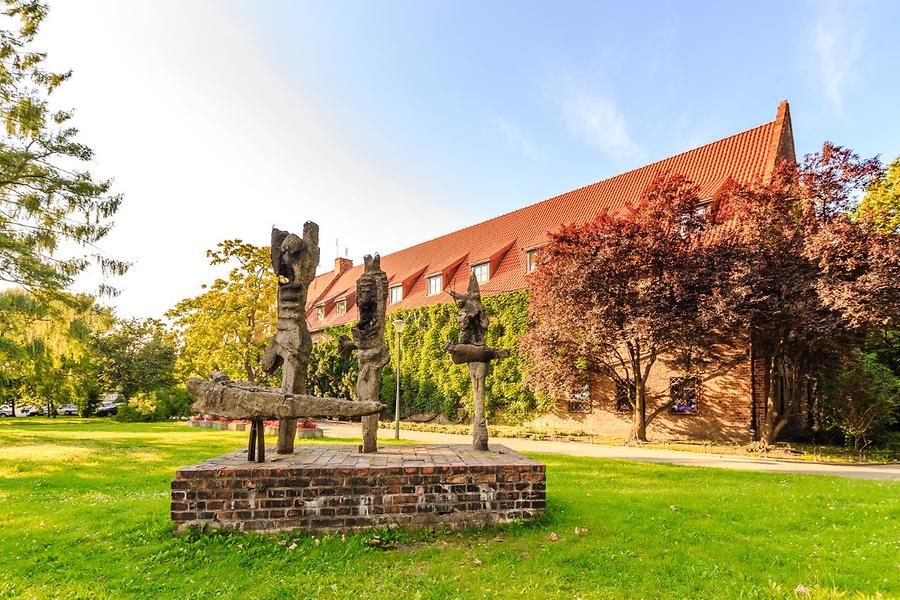The Burning Sculpture#

The Burning Sculpture, © visitwroclaw.eu
Expressive figures from reinforced concrete stands in front of the Museum of Architecture. The sculpture of Władysław Hasior was created in the 60s as a memorial of the “Executed Hostages from Nowy Sącz”. Eventually, the then authorities did not permit the installation of the sculpture. They saw it as an allegory of the Christ’s Passion or symbolic recognition for Józef Kuraś alias “Fire” (Ogień), a guerilla warrior, who fought with the communists after World War II. At the beginning of the 70s, a twice smaller sculpture was installed inf ront of the Museum. The pipes, which are the element of the sculpture, are filled with petrol - only with a real fire Hasior’s sculpture becomes truly magnificent and attractive. Unfortunately, it does not happen very often.
Diese Skulptur von Władysław Hasior entstand in den 60er Jahren als Denkmal für die „Erschossenen Geiseln aus Nowy Sącz”. Die expressiven Figuren aus Stahlbeton stehen vor dem Architekturmuseum in Wrocław. Damals waren die Machthaber mit dem Bau der Skulptur nicht einverstanden. Sie sahen in ihr eine Allegorie des Leidens Christi und eine symbolische Anerkennung für Józef Kurasia, Pseudonym „Ogień” (Feuer), einen Partisanen, der nach dem Zweiten Weltkrieg gegen die Kommunisten gekämpft hat. Anfang der 70er Jahre wurde die Skulptur, zweimal kleiner als ursprünglich geplant, vor dem Architekturmuseum aufgestellt. In die Rinnen, die zur Figur gehören, gießt man Brennstoff hinein. Hasiors Kunstwerk nimmt erst in Verbindung mit lebendigem Feuer außergewöhnlich effektive und volle Ausmaße an. Leider wird das Denkmal von Władysław Hasior in dieser Form äußerst selten präsentiert.